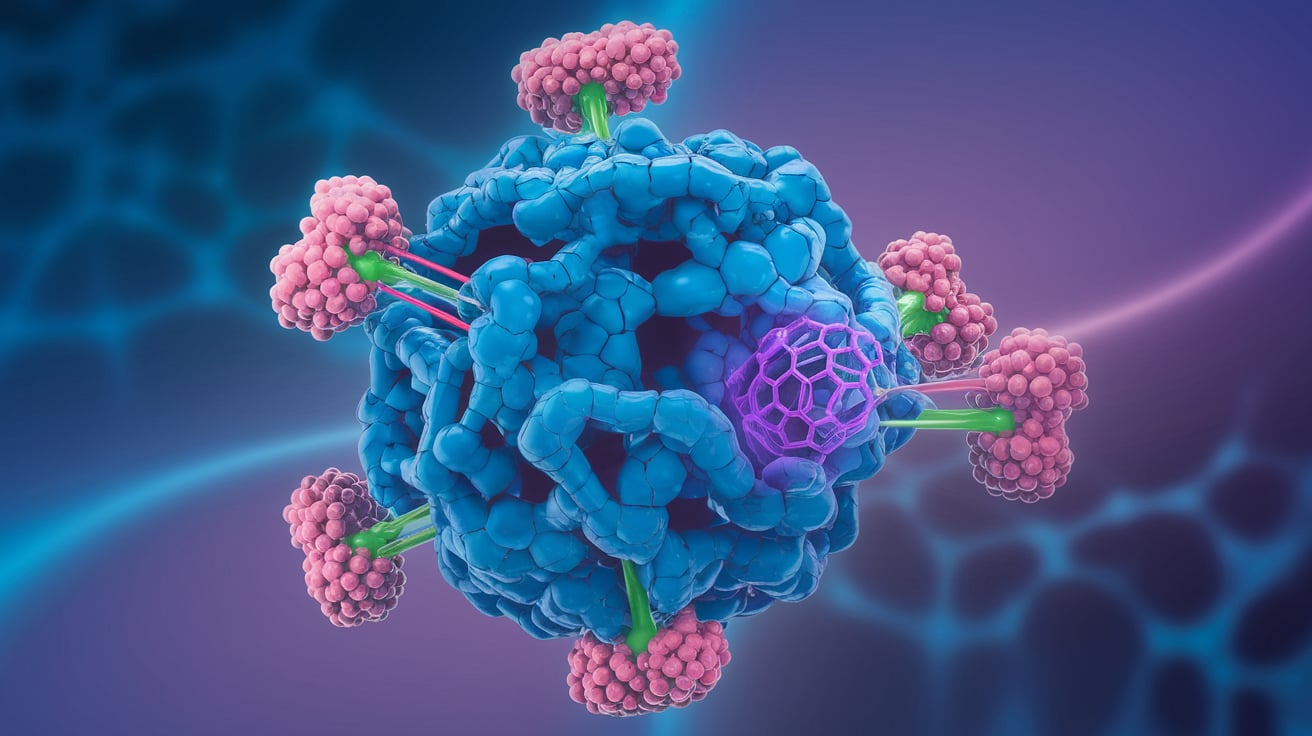In cancer research, the focus has increasingly shifted toward understanding the complex cellular pathways that regulate cancer cells’ growth, metabolism, and survival. One such critical pathway is the mTORC1 (mechanistic Target of Rapamycin Complex 1), which controls cell growth and proliferation. A new compound that has shown promise in targeting this pathway is NV-5440. This article will explore the significance of NV-5440 in mTORC1 and how it holds potential for future cancer therapies.
Understanding mTORC1 and Its Role
Before diving into NV-5440 in mTORC1, it’s essential to understand the mTORC1 pathway itself. mTORC1 is part of the larger mTOR (mechanistic Target of Rapamycin) signalling pathway, which regulates vital cellular processes such as protein synthesis, nutrient sensing, and autophagy. When mTORC1 is activated, it signals cells to grow and divide, making it a central player in cell growth regulation.
However, the mTORC1 pathway can also become overactive in cancer cells, contributing to uncontrolled growth and survival. This overactivation leads to cancer progression, making mTORC1 a significant target for cancer treatment. By inhibiting mTORC1, it’s possible to slow down or even stop the proliferation of cancer cells.
NV-5440: A Promising Compound in mTORC1 Inhibition
NV-5440 is an emerging compound in oncology, mainly due to its effectiveness in inhibiting the mTORC1 pathway. NV-5440 in mTORC1 has shown potential in preclinical studies to reduce cancer cell growth by explicitly targeting this critical pathway. Researchers are excited about NV-5440 in mTORC1 because of its ability to selectively inhibit mTORC1 without affecting the mTORC2 complex, which is another part of the more extensive mTOR pathway but has different cellular functions.
By focusing specifically on mTORC1, NV-5440 could provide a more targeted approach to cancer treatment, reducing side effects associated with broader mTOR inhibitors. This selectivity makes NV-5440 in mTORC1 a promising candidate for further research and clinical development.
How NV-5440 in mTORC1 Works
NV-5440 in mTORC1 blocks the signalling pathway that tells cancer cells to grow and divide. In a typical cellular environment, mTORC1 regulates several downstream processes that promote cell survival and proliferation. When cancer hijacks this pathway, it leads to tumour growth. NV-5440 disrupts this hijacking by preventing mTORC1 from activating its downstream targets, halting cancer cell growth.
In preclinical models, NV-5440 in mTORC1 has demonstrated its potential to suppress tumour growth, making it an exciting focus of ongoing research. While these studies are still in their early stages, the results have been promising enough to warrant further investigation.
Potential Applications of NV-5440 in Cancer Treatment
The potential applications of NV-5440 in mTORC1 are vast, particularly for cancers where mTORC1 overactivation plays a critical role. Some cancers, such as breast cancer, kidney cancer, and certain brain tumours, have been shown to rely heavily on the mTORC1 pathway for growth and survival. By targeting this pathway, NV-5440 in mTORC1 offers a new avenue for treating these cancers more effectively.
Moreover, NV-5440 in mTORC1 could be used with other cancer therapies. For instance, pairing NV-5440 with traditional chemotherapy or immunotherapy might enhance treatment outcomes by attacking cancer cells from multiple angles. By inhibiting the mTORC1 pathway, NV-5440 could make cancer cells more susceptible to these treatments, improving overall patient response.
Challenges and Future Research
While NV-5440 in mTORC1 holds great promise, there are still challenges to overcome. One of the main concerns in developing any new cancer therapy is ensuring it can be effective in humans without causing significant side effects. Although NV-5440 has shown potential in preclinical studies, more research is needed to confirm its safety and efficacy in clinical trials.
Researchers are also exploring whether resistance to NV-5440 in mTORC1 could develop over time. Cancer cells may sometimes find alternative pathways to survive when one pathway is blocked. Therefore, ongoing research is crucial to understand how to optimise the use of NV-5440 in mTORC1 and to determine whether combination therapies could help prevent resistance.
The Future of NV-5440 in mTORC1 Research
The future of NV-5440 in mTORC1 research looks promising as scientists continue to explore its potential in treating cancer. Ongoing studies aim to identify which cancer types most respond to this compound and how they can be integrated into existing treatment protocols.
As we learn more about NV-5440 in mTORC1, it could become a cornerstone in personalised cancer treatment. Since not all cancers are the same, the ability to target specific pathways like mTORC1 offers a more tailored approach to therapy, potentially improving outcomes for patients.
Additionally, NV-5440 in mTORC1 might have applications beyond cancer treatment. Since the mTORC1 pathway is involved in other diseases related to cell growth and metabolism, such as certain neurological conditions and metabolic disorders, NV-5440 could be a useful therapeutic tool for various health issues.
Conclusion
In conclusion, NV-5440 in mTORC1 is a promising compound that offers new hope in the fight against cancer. Targeting the mTORC1 pathway can potentially stop cancer cell growth with fewer side effects than broader mTOR inhibitors. Although more research is needed, NV-5440 in mTORC1 could play a significant role in future cancer therapies, offering a targeted approach to treating some of the most challenging cancers.
